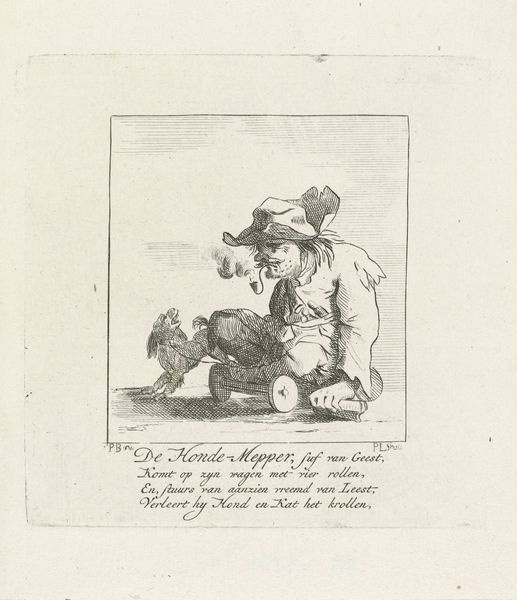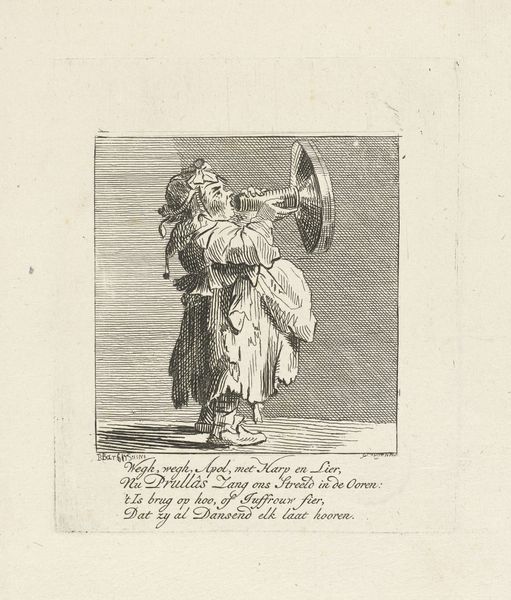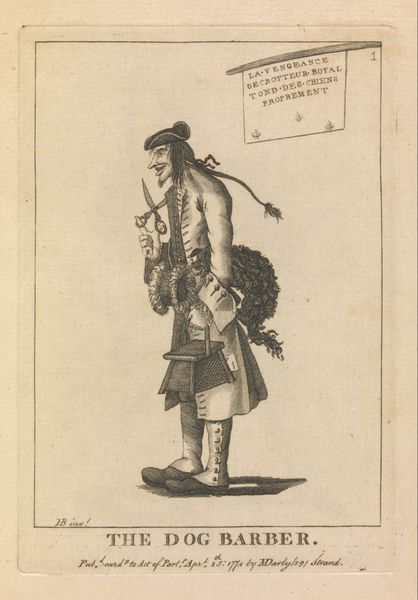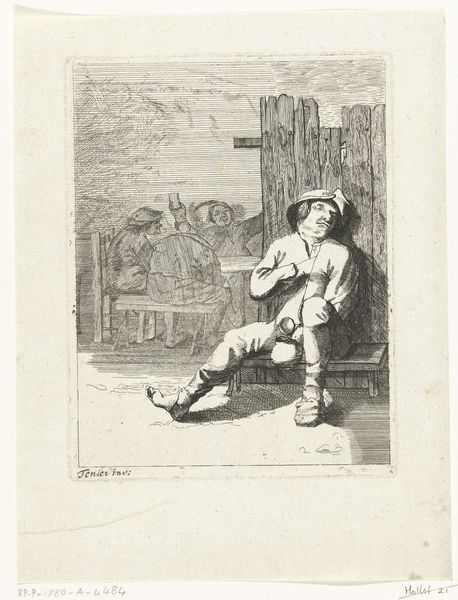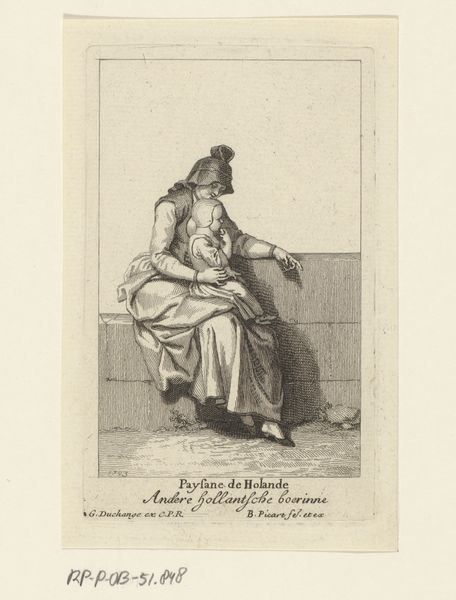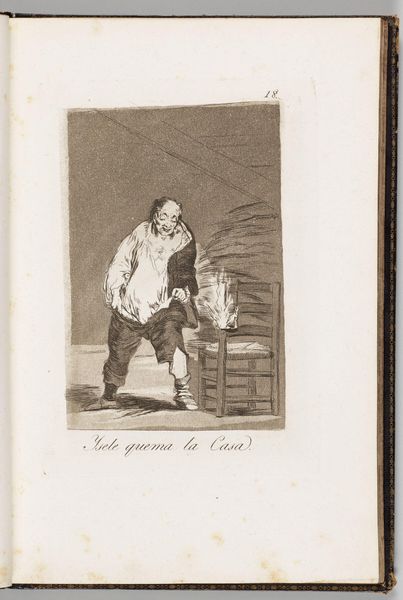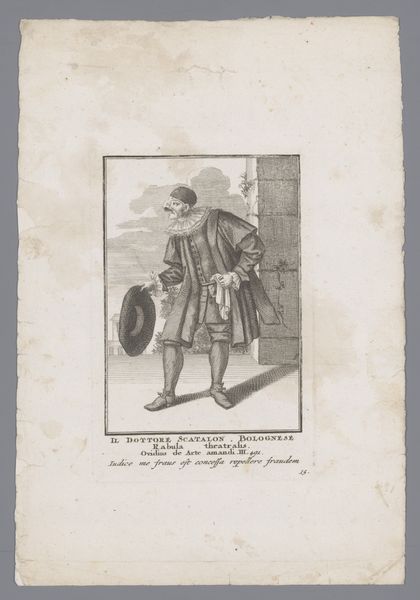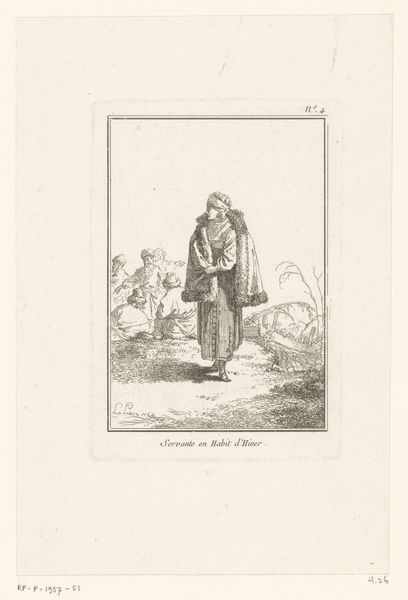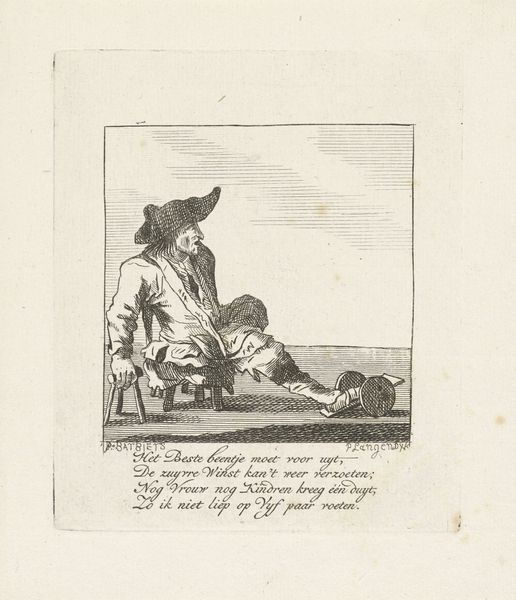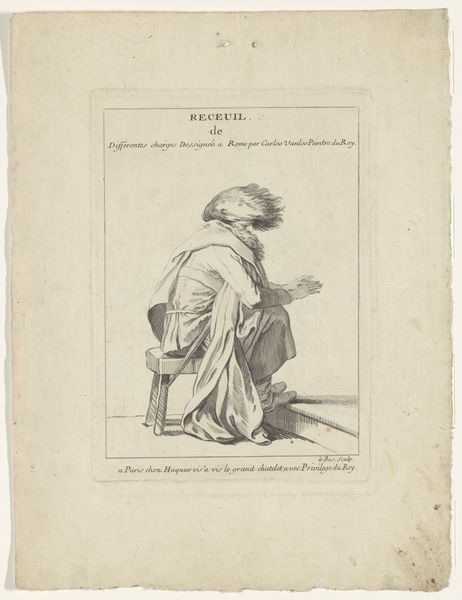
print, engraving
#
portrait
# print
#
old engraving style
#
15_18th-century
#
genre-painting
#
engraving
Dimensions: height 135 mm, width 116 mm
Copyright: Rijks Museum: Open Domain
Pieter Langendijk the Younger made this print, titled “Man in a chair with wheels being pulled,” sometime around the late 18th century. It's an etching, so the artist used acid to cut lines into a metal plate, which was then inked and pressed onto paper. But what does it mean? We see a man lounging in a wheeled chair, being pulled along by a woman. The Dutch Republic in the 1700s was a society of stark class differences, but also a deeply commercial culture where the social order was increasingly open to challenge. Here, it looks as though Langendijk is commenting on gender and class dynamics. The poem beneath the picture, refers to the man's "speaking whip" in his left leg, suggests that the image may be pointing out the absurdity of the social hierarchy and the subjugation of women. To understand the image, historians might dig into sources about Dutch social life, gender roles, and the art market of the period. It can provide us with insight into the social and political role of art.
Comments
No comments
Be the first to comment and join the conversation on the ultimate creative platform.


